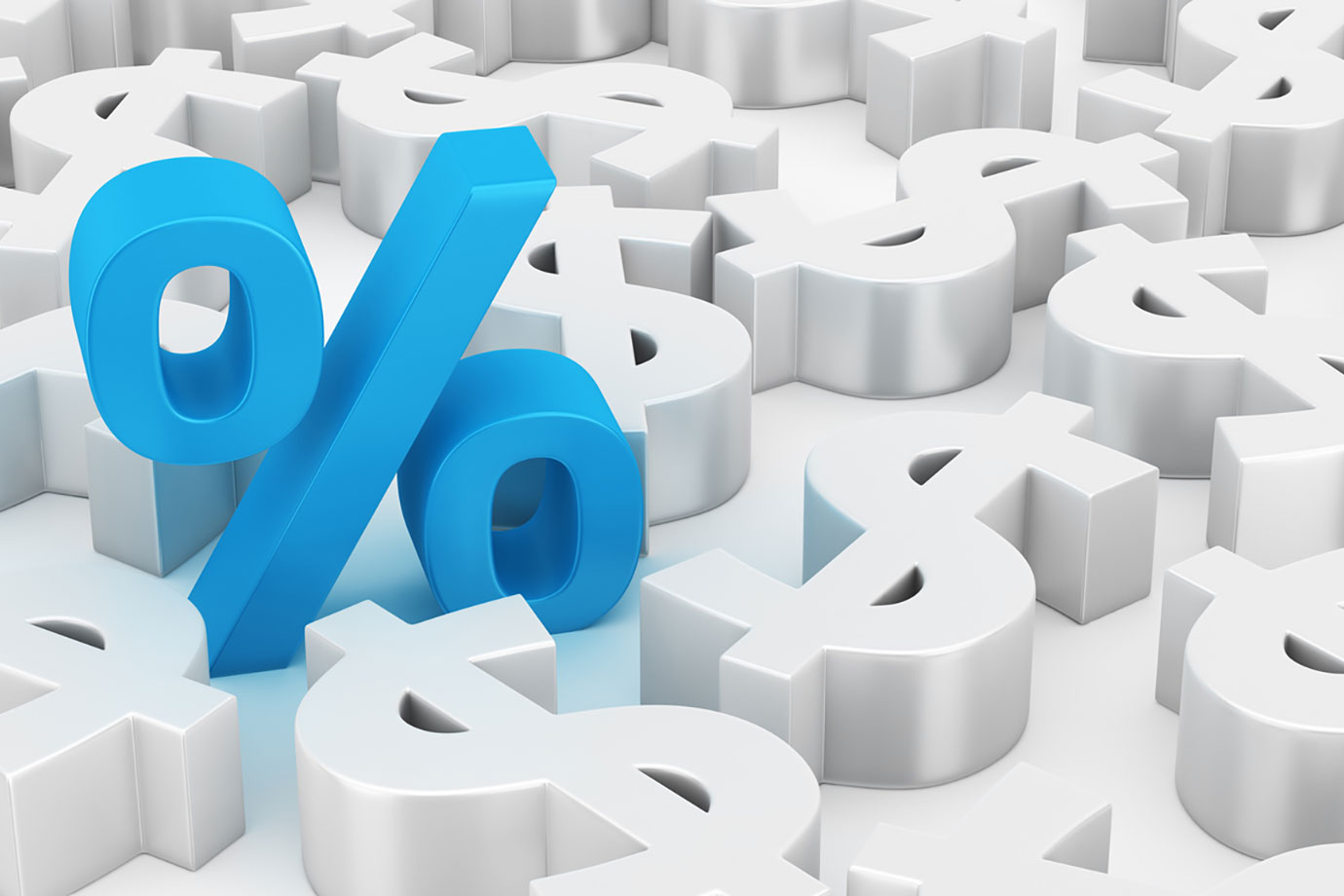On This Page:
Simple vs. Compounding Interest Rate
How Do Lenders Determine Interest Rates?
Discrimination and Interest Rates
How Do Interest Rates Affect Bad Credit Loans?

Find Out Your Interest Rate
- Get a personalized loan offer
- Reasonable interest rates for all credit scores
- No hidden fees
Interest rates impact every aspect of the economy, from loans to savings accounts to the stock market. As an average consumer, you must comprehend the ins and outs of rates if you want to come out ahead.
The interest rate influences whether borrowing or saving money makes more sense. If loan rates are low, you can take some cash out to do those home renovations you’ve been dreaming about. Interest rates fall or go up depending on a bunch of factors. But you can still monitor which way rates are trending. So, you are caught off guard when deciding whether to apply for a mortgage loan or another long-term personal loan. Let’s see the interest rate and how it varies while borrowing money.
Key takeaways:
- Interest rates play a crucial role in various financial transactions, influencing borrowing, saving, and investing decisions.
- Two main types of interest rates exist – simple and compound. Simple interest involves a straightforward calculation based on the original loan amount, while compound interest adds interest on top of interest, potentially increasing borrowing costs significantly over time.
- Different financial products display interest rates as either APR (Annual Percentage Rate) or APY (Annual Percentage Yield), depending on whether it’s a loan or a savings account.
- Various factors, including economic conditions, central bank policies, and market demand, influence interest rates. Higher rates discourage borrowing, while lower rates stimulate economic activity.
- Interest rates significantly impact borrowers, particularly those with bad credit.
What are Interest Rates?
The interest rate is what a lender charges someone borrowing money. It’s a percentage of the total loan amount. If you borrow $10,000 and the interest rate is 5%, you’ll pay $500 per year in interest on that loan.
Banks like the Federal Reserve and credit unions also pay interest rates on savings accounts. It encourages people to put their money there instead of spending it all. The interest the bank pays you is the annual percentage yield or APY, which differs from the APR or annual percentage rate you might spend on a loan.
Simple vs. Compounding Interest Rate
There are two types of interest rates: simple and compound. The calculating concept differs when you borrow money from a lender.
Simple Interest Rate Example
If someone takes out a $300,000 loan and the agreement says the introductory interest rate is 4%, they’ll need to pay the bank back the original $300,000 plus 4% of that amount. So, the loan principal will be $300,000 plus $12,000 (which is 4% of $300,000), making it $312,000 total.
Compound Interest Rate Example
Some lenders use compound interest instead, which makes the borrower pay even more. With compound interest, also called interest on interest, the lender charges interest on the original amount borrowed and the interest from previous years. So, each year, the borrower owes the principal, new, and accumulated interest.
According to the Calculator Site, the compound interest rate formula is A = P(1 + r/n)^nt. For example, John borrows a three-year loan of $10,000 at an interest rate of 5%, which compounds annually. In the end, according to the formula mentioned above (where P is the principal and n is the number of compounding periods), he pays $1,576.25 in interest on the loan.
APR vs. APY
Consumer loans and savings accounts usually show interest rates at the Annual Percentage Rate (APR). It tells you the rate lenders want back on money you borrow, and for example, credit cards tell you rates as APRs. The mortgage or car loan has a 4% APR in the case given. It doesn’t include compounded interest over the year.
Conversely, the Annual Percentage Yield (APY) shows the rate earned on a savings account or Certificates of Deposit (CDs). Those are at banks or credit unions. APY does factor in compounded interest.
How Do Lenders Determine Interest Rates?
Banks decide interest rates based on the economy. The Federal Reserve in the U.S. sets the primary interest rate. It guides banks in picking the Annual Percentage Rates (APRs) they’ll use. If the central bank makes rates higher, borrowing gets pricier. So, people borrow money less, slowing down spending. You can see this when inflation is happening.
To fight inflation, banks need people to keep more money with them, shrinking how much is out there or making loans popular. Consumers tend to save more because of solid returns when rates are high. The stock market dips as people put money in savings instead.
On the flip side, low rates typically strengthen economies. Cheap, easy loans lead to more borrowing, spending, and investing in risky stuff like stocks. All this pumps up growth and stock market activity.
How Does Interest Work?
When you borrow money, you make interest payments to the lender as a cost of using their money. Higher interest rates increase your borrowing costs, while lower rates reduce costs, and rates can be fixed over the loan or variable, depending on the markets.
Central banks like the Federal Reserve set short-term rates to control the economy. They raise rates during expansions to curb inflation and reduce rates during downturns to encourage borrowing and spending.
Market forces of supply and demand also impact interest rates. When lots of people want to borrow, rates tend to rise. And when more funds are available to lend, rates often decline.
Discrimination and Interest Rates
There are laws saying lenders can’t discriminate based on race and gender, like the Equal Credit Opportunity Act. However, racism is still built into the system when it comes to getting loans. The data shows white people have an easier time getting approved.
The Home Mortgage Info law gives lenders details on who they approve or turn down for loans. The numbers for 2022 showed Black Hispanic-White and Asian buyers getting told no about 16%, 11%, and 9% on traditional mortgages. For white buyers, it was way less, around 6%.
Harvard and the Urban Institute policy group have also backed up the data on higher rates. In 2022, the average Black owner pays 33 basis points more interest than the average white person, costing about $250 more annually.
How Do Interest Rates Affect Bad Credit Loans?
Interest rates impact the cost and availability of loans for people with low credit scores. Since lenders see them as riskier borrowers, they charge higher interest rates to compensate for the added risk. It is how interest rates affect loans for bad credit borrowers:
- Bad credit loans have much higher interest rates than suitable ones, making them more expensive.
- With higher rates, you pay way more overall to borrow the same amount. Even minor loan interest rate differences add up over the repayment term.
- The higher payments caused by higher rates can make loans more challenging for borrowers each month. It can raise defaults.
- Borrowers with low scores often don’t qualify for affordable rates or good loan terms. So they’re stuck with only high-rate loan options, worsening money issues.
The Cost of Bad Credit Loans
The price you must pay for a bad credit loan can vary, depending on who’s giving you the money, how much you need to borrow, how long you need to pay it back, and all the little rules they make you agree to. Generally speaking, when your credit score isn’t good, these loans will have higher interest rates than consumers with good credit can get. Usually, the rates could exceed 35.99% and reach 400% (for payday loans).
On top of the higher rates, people with bad credit might get stuck paying extra fees. Flat, origination, and late fees will be charged if you miss a payment or penalties. These extras can increase the loan cost in the end.
How to Get a Lower Interest Rate on a Bad Credit Loan?
Getting a more affordable interest rate on a poor credit loan can be tricky but possible. Some steps that might help:
- Upgrade Your Credit Score. Working to upgrade your score can improve your chances for a better rate. Pay the bills on schedule, cut down on debt, and fix inaccuracies on your credit profile.
- Shop Around. Go with something other than the first loan you’re offered. Take a look at what different places are offering rate-wise. Online lenders, credit unions, and community banks could have more competitive rates than traditional banks.
- Consider a Backed Loan. Loans with collateral like your car or house are called secured loans. Lower risk for the lender means they may provide lower rates than unsecured.
- Get a Co-Signer. If you’ve got family/friends with solid credit who co-sign, you could qualify for a lower rate. But remember – if you miss payments, the co-signer must cover for you.
- Negotiate. Be bold about negotiating rates or terms with lenders. Explain your sitch and see if they can do better.
Bottom Line
Interest rates are a big freaking deal when it comes to handling money, whether you’re trying to borrow money through a mortgage, credit card, savings account or make your money work for you by saving and investing. Getting how they function is critical for taking control of your financial situation. Rates don’t just randomly go up and down. Things like inflation, what the government and central banks are up to, and how risky borrowers are push them one way or the other. If you need more information about interest rates, contact us to discuss the details.

